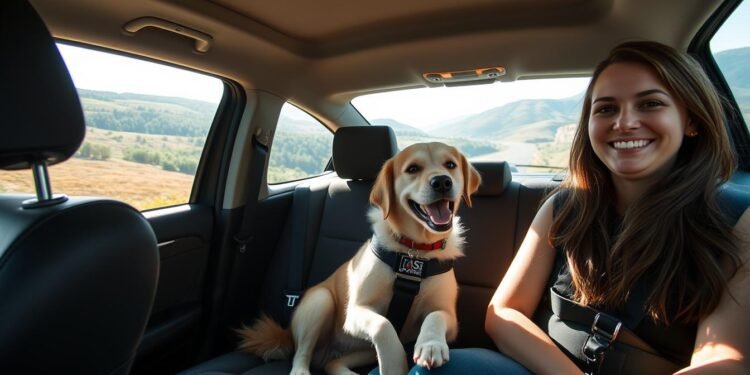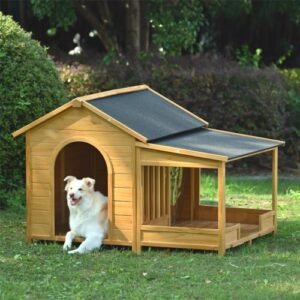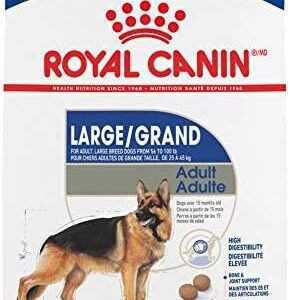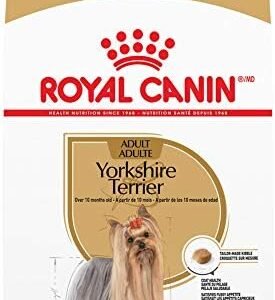Have you ever looked in the rearview mirror and seen your dog on the back seat? They’re wagging their tail and looking excited. It’s a sweet moment, but it also worries you. Every trip, big or small, means keeping your dog safe.
A dog seatbelt is more than a safety belt for pets. It’s a vital tool that keeps your dog safe in unexpected situations. With dogs free in cars, the risk of injury goes up by 60%. A good seatbelt can keep your dog safe and give you peace of mind.
As pet owners, we must make every journey safe and fun. Let’s look at how dog seatbelts can make a big difference.
Table of Contents
Importance of Pet Safety While Traveling
Keeping pets safe while traveling is crucial for their well-being and yours. Cars are made for people, not pets. Without proper restraints, pets can become a danger in accidents.
Studies show that a big dog can push over 2,400 pounds in a crash at just 30 mph. This can lead to serious injuries for both pets and people.
Many pet owners don’t use restraints, despite the risks. A 2011 survey found only 16% of pet owners restrain their pets. This shows a big gap in understanding how to keep dogs safe while driving.
Only 15-20% of people use seatbelts or harnesses for their pets. This means many dogs are not secured during trips.
The Center for Pet Safety stresses the need for certified pet safety products. While there’s no clear proof on harnesses vs. crates, good restraints make everyone safer. Pets can distract drivers, making them a danger to themselves and others.
Small dogs should ride in carriers or harnesses that clip to the seatbelt. For bigger dogs, a crate in the back of an SUV is safest. If that’s not possible, a harness can still protect them.
Traveling with pets needs careful planning and safety steps. The dangers of loose animals highlight the need for pet safety. This makes trips safer for both pets and their owners.
- Keep Your Pets Safe: Your dog loves car rides, but roaming dogs can lead to distractions and dangerous conditions. Keep …
- Premium Metal Buckle for Ultimate Protection: Our dog car leash seat belt for large dogs, medium breeds and small pets i…
- Aircraft-Grade Aluminum Carabiner: Built to withstand over 850 lbs of force, the durable aviation aluminum carabiner ens…

Understanding Dog Seatbelts and Their Functionality
Dog seatbelts are key for keeping pets safe in cars. They attach a dog harness to a strap that locks into the car’s seatbelt. This setup spreads out the force of a crash or sudden stop, protecting the dog’s neck and back.
Unrestrained dogs in cars face huge risks. A small dog can hit like a 500-pound object at 50 mph. An 80-pound dog can become a 2,400-pound force in a 30 mph crash. This shows how vital a good dog seatbelt is for safety.
The Center for Pet Safety tests travel gear for dogs, using dummy dogs in crashes. Only products that pass get the “Center for Pet Safety Certified” label. This mark helps pet owners know their dogs are safe.
Knowing how dog seatbelts work helps pet owners make better choices. Using a dog seatbelt not only keeps pets safe but also makes the whole car safer.
Benefits of Using a Dog Car Restraint
- Upgraded 2 In 1 Seatbelt — SlowTon dog harness has upgraded the connect seat belt to ensure universal fit for most of …
- Keep Dogs Safe — Featured with superior nylon strap and durable mesh fabric, the harness for car is enough durable and…
- Breathable Mesh Vest Harness — Made of double layers mesh durable but lightweight fabric, with the flannelette padded …








Using a pet seat belt has many benefits for pets and their owners. Many dog owners let their pets ride without a seat belt, which increases the risk of accidents. By using a pet seat belt, drivers can avoid distractions that might cause accidents.
Studies show that unrestrained dogs are involved in about 30% of accidents caused by driver distraction. A pet seat belt can also prevent injuries during sudden stops or crashes. Crash-tested harnesses can reduce injury risk by up to 70%.
Dogs restrained by a harness have fewer injuries than those not restrained. Harnesses made for vehicle use can prevent up to 80% of potential harm. Using a pet seat belt also makes the car ride more comfortable for dogs.
Not using a pet seat belt can lead to legal issues in some places. In Australia, for example, fines for unrestrained pets can be up to AUD 500, depending on the state.
| Region | Legal Consequences for Unrestrained Pets |
|---|---|
| New South Wales | Penalties for driver distraction |
| Western Australia | Illegal for dogs to be in front seats |
| Tasmania | Prohibition against dogs in drivers’ laps |
How Dog Seatbelts Reduce Risk of Injury
Keeping your dog safe while traveling is very important. A dog seat belt attachment helps keep them safe by limiting movement in the car. If a car suddenly stops, an unrestrained dog can become a huge danger, not just to themselves but to others in the car too.
Using a dog seat belt attachment can greatly lower the chance of injury in such situations.
Car accidents involving dogs are more common than you might think. A study from the University of Pennsylvania found over 600 cases where dogs were hurt. In these cases, 31% of dogs had minor injuries, but 87% had skeletal injuries, with the pelvis being the most common injury site.
The liver was often the most damaged organ, showing how serious it can be for dogs to travel without being restrained.
But, surprisingly, only about 20% of dog owners use safety measures when driving with their pets. This lack of caution can lead to legal trouble, as many states have laws requiring pets to be secured in vehicles. Owners might face fines or even have their insurance claims denied if their pets are not restrained.
The Center for Pet Safety has tested dog seat belts using crash test dummy dogs. While not all dog seat belts are tested, many don’t meet safety standards. This lack of testing can make owners unsure about their safety. Using reliable dog seat belt attachments can make a big difference in keeping your dog safe.
Do Dog Seatbelts Work? Insights from Experts
It’s important for pet owners to know if dog seatbelts are effective. Studies show that restrained pets can be 80% less likely to get hurt in car accidents. This makes dog seatbelts a crucial safety tool.
Dogs without seatbelts are a big risk. They can distract drivers three times more. About 15% of car accidents involve pets not in their seats. This shows how vital it is to use a dog seatbelt for everyone’s safety.
Many dog seatbelts don’t meet safety standards, with about 40% failing. Cheap or wrong seatbelts might only offer 10-20% protection. Yet, 75% of users feel safer with their pets restrained.
Studies also show that dogs get less stressed when in seatbelts. This makes seatbelts a must-have for safe and calm travel.
Keeping pets safe is key, as 60% of owners don’t use restraints. Experts say good harnesses or crates are best. So, getting a quality dog seatbelt is not just a good idea; it’s a must for pet safety.
| Statistic | Value |
|---|---|
| Risk Reduction with Seatbelt | Up to 80% |
| Risk of Distraction | 3 times more likely |
| Car Accidents Involving Pets | 15% |
| Seatbelt Usage by Owners | 30% regularly use restraints |
| Dog Seatbelt Effectiveness | 10-20% (low-quality) |
| Users Feeling Secure | 75% |
| Dog Owners Using Restraints | 60% do not restrain |
Choosing the Right Dog Seatbelt for Your Pup
Choosing the right dog seatbelt is key for safe travel. Every dog is different, so finding the right fit is important. A good seatbelt makes car rides safer and more comfy for your pet.
- DURABILITY – No matter how well-trained your pup may be, there is no guarantee that it won’t tug, pull, and chew on the …
- ELASTIC BUFFER DESIGN – Restraint with elastic buffer could keep your dog from sudden brake or sharp turn, keep your dog…
- TANGLE-FREE & ADJUSTED – The dog seat belt can be easily adjusted from 24 to 31 inches. A sturdy, aluminium alloy clasp …








Factors to Consider When Selecting a Seatbelt
The safety of your dog depends on the seatbelt’s features. To choose wisely, consider these points:
- Size and Weight: Measure your dog’s size and weight for a snug fit.
- Temperament: Think about your dog’s car behavior; active dogs need more secure restraints.
- Type of Restraint: Look at simple restraints to full harness systems for comfort and support.
- Safety Ratings: Choose crash-tested restraints that meet safety standards from groups like the Center for Pet Safety.
Different Sizes and Types of Seatbelts
Dog seatbelts vary in size and style to fit different breeds and preferences:
- Standard Harnesses: Good for most dogs, designed for general use.
- Adjustable Harnesses: Allows for a custom fit, essential for comfort and safety.
- Crash-Tested Harnesses: Models like the Kurgo Tru-Fit are tested for safety, meeting child restraint standards.
- Back Attachment Restraints: Better for safety, reducing neck injury risk.
Comparing Dog Seatbelts to Other Restraint Systems
Choosing the safest way for your dog to travel is important. Dog seatbelts offer comfort and flexibility, great for big dogs. They let dogs sit, lie down, and move a bit without losing safety. On the other hand, dog crates are good for small dogs, giving them a safe space.
Each restraint has its own pros and cons. Pet owners need to think about these when picking the best option for their dog.
The following comparison highlights key factors regarding dog seatbelts and other restraint systems:
| Feature | Dog Seatbelt | Dog Crate | Dog Car Seat |
|---|---|---|---|
| Comfort | High flexibility, allows movement | Confined but secure | Limited space, can restrict movement |
| Size Compatibility | Fits various sizes, adjustable | Best for smaller breeds | Specific sizes available |
| Ease of Use | Simple installation; can cause some usability challenges | Usually requires more effort to set up | Quick to secure but needs proper fitting |
| Safety | Can reduce injury risk by 67% | Secure but can shift during an accident | Less tested for safety |
| Cost | Ranges from $20 to $200 | Often costs around $500 | Varies widely with basic ones starting at $30 |
Statistics show that around 50% of pets in accidents get hurt badly or die without a restraint. About 80% of dog owners don’t use a restraint system. This makes choosing the right one very important.
Each restraint system’s design affects its safety and ease of use. For example, the Ruffwear Load Up Harness is safe without a leash, reducing travel worries.
Choosing the right dog car restraint depends on what you need and want. It’s about comfort, size, ease of use, safety, and cost. Every pet owner is different, so making an informed choice is key for their dog’s safety.
Types of Dog Travel Safety Products Available
Ensuring your dog’s safety on the road is crucial. A pet safety belt is just one option. There are many products that can make travel safer for your dog.
Here are some common types of dog travel safety products:
- Dog Seatbelts: These restraints attach to your car’s seatbelt system. They keep your dog secure and reduce injury risk during sudden stops.
- Dog Car Seats: Elevated car seats are great for smaller dogs. They offer safety and comfort, letting your dog see out the window.
- Travel Crates: Properly sized crates protect your dog in accidents. They also provide a familiar space that eases anxiety during travel.
- Pet Barriers: These products keep dogs from jumping into the front seat. They help minimize distractions while driving.
- Travel Dog Beds: These beds offer a designated area for rest. They make long journeys more comfortable, helping anxious dogs.
- Adjustable Dog Ramps: Ideal for older or small dogs, these ramps make getting into your vehicle easier. They reduce strain on both the pet and the owner.
Researching these products helps dog owners understand their benefits. Using a pet safety belt with other safety products improves your dog’s travel experience. It also ensures safety standards are met.
Dog Car Seatbelt vs. Dog Car Seats: Which is Best?
- SAFETY FIRST – Our pets are a part of the family – so let’s keep them safe! Our seat belt for dogs has a 360 degree rota…
- STURDY & DURABLE – This dog seatbelt is made with premium materials that won’t cause your pet any discomfort, all while …
- UNIVERSAL FIT – This dog car harness is designed to be the perfect fit! Compatible with most cars, you can put this pet …








- Keep Your Pet Safe: This dog car seat can be secured with the car seat belt and headrest belt to prevent movement ,plus …
- Small Dog Car Seat: 19.7 in (L) X 19.4 in (W) X 12.5 in (H), The pet car seat is suitable for small dogs and cats up to …
- Comfortable Material: The surface of the dog booster seat with ultra-soft short plush fabric, the interior is filled wit…








Keeping your furry friend safe in the car is crucial. It’s important to know the difference between dog car seatbelts and seats. Each has its own benefits and drawbacks, depending on your dog’s size and behavior. Choosing the right option ensures your pet stays safe and comfy on trips.
Pros and Cons of Dog Car Seats
Dog car seats are great for small breeds. They offer a cozy spot for pets to enjoy the view without losing safety. Here are some key points:
- Comfort: Dog car seats have padding for extra comfort.
- Safety: They keep dogs secure, reducing injury risk during stops.
- Visual Access: Dogs can look out the window, making trips fun.
- Space: Not good for big dogs, as they don’t fit well.
Despite their benefits, dog car seats have downsides. They’re not for big dogs and can be pricier than seatbelts.
| Feature | Dog Car Seats | Dog Car Seatbelts |
|---|---|---|
| Comfort Level | High, for small breeds | Variable, depends on harness |
| Suitability for Large Breeds | Not recommended | Flexible for various sizes |
| Mounting and Storage | May need more space | Easy to store and mount |
| Cost | Generally higher | More affordable options |
Your choice between a dog car seat and seatbelt depends on your dog’s size and your trips. Safety is key. Knowing the differences helps you pick the best for your pet’s comfort and safety.
Best Dog Seatbelts on the Market
Looking for the best dog seatbelts can make car rides safer and more comfortable for your pet. A good dog seatbelt protects your pet and keeps the driver focused. Here are key features to look for and a comparison of top products on Amazon.
Top Features to Look For
- Crash Test Certifications: Make sure the seatbelt has been crash tested for maximum safety.
- Adjustable Sizing: Choose seatbelts that adjust to fit different dog sizes.
- Comfortable Padding: Opt for seatbelts with padding for comfort on long trips.
- Durable Materials: Pick products made from high-quality materials like 300 denier polyester and weather-proof nylon.
- Universal Compatibility: Go for seatbelts that fit standard seat belt systems.
Recommended Amazon Products Comparison
| Product Name | Price | Features | Reviews |
|---|---|---|---|
| Load Up Harness | $17.99 | Crash tested, adjustable from 13 to 42 inches, padded | 11 reviews |
| Mighty Paw Dog Car Safety Belt | $10.99 | Adjustable (16 to 26 inches), force tested for 850 pounds | 5 reviews |
| Reflective Dog Seatbelt | $14.99 | Reflective materials for visibility, adjustable | 7 reviews |
| Chew-Proof Seatbelt | $15.49 | Durable tether, adjustable from 16.5 to 25.5 inches | 8 reviews |
| Standard Dog Seatbelt | $12.99 | Basic model, adjustable, various colors | 14 reviews |
Tips for Proper Usage of Dog Seatbelts
Keeping your dog safe while traveling is very important. Using dog seatbelts correctly is key to their effectiveness. Here are some tips for safe trips with your furry friend:
- Securely attach the seatbelt: Always follow the manufacturer’s instructions to fasten the dog seatbelt. Harnesses that are crash-tested and DOT-approved can greatly reduce injuries in accidents.
- Choose the right location: The back seat is the safest spot for a dog in a car. It reduces distractions and the risk of airbag injuries.
- Familiarize your dog: Get your dog used to the seatbelt before long trips. A familiar setting can help reduce anxiety and car sickness.
- Regular checks: Make sure the seatbelt is in good shape and not damaged. Worn-out parts can be dangerous in emergencies.
- Stay aware of distractions: Unrestrained dogs can be a distraction while driving. Always keep your dog secured to prevent sudden movements that might take your attention away.
Dogs up to 80 pounds can become very heavy and dangerous in sudden stops. Using dog travel safety measures can greatly reduce these risks. Accidents often happen more in winter, so it’s crucial to stay alert.
Investing in long-term dog travel safety is wise. Consider the Sleepypod Clickit Sport or the ZuGoPet The Rocketeer Pack. They are known for their safety in crash tests. Also, have a dog first aid kit ready for any unexpected situations on the road.
- Innovative Design: Packed with state-of-the-art technology that makes it light and easy to use without sacrificing safet…
- Safety Tested: Rigorously crash-tested at U.S., Canadian, and E.U. child safety standards, then independently tested and…
- Seamlessly Transition from Car Harness to Walking Harness: Double D-rings eliminate the need to swap harness gear when t…
- CRASH TESTED CERTIFIED: Enhanced strength crash tested car harness for dogs up to 75 lbs. Tested at Calspan’s Buffalo, N…
- ADJUSTABLE & COMFORTABLE EVERYDAY HARNESS: Crash tested for vehicle travel and includes no-pull D ring for training your…
- DOG SAFETY SEAT BELT TETHER INCLUDED: Dog seat belt loop tether with carabiner is included and compatible with any car s…
- CRASH TESTED DOG HARNESS: Certified up to 32Kg / 70lbs to provide total peace of mind when transporting your dog in the …
- PADDED & LIGHTWEIGHT: A design that connects directly to your car seat belt, this crash tested harness provides a strong…
- FULLY REFLECTIVE FABRIC: The front chest piece ensures hi visibility in all situations at any time of day.








- SAFETY TESTED VEHICLE HARNESS This car safety harness conforms to all relevant requirements for the following standards:…
- BEST DOG HARNESS FOR CAR TRAVEL Simply feed the seat belt through both webbing handles on the top of the harness, click …
- SIMPLE, ONE TIME FIT You only have to fit the harness to your dog once. From then on, the Harness can be taken on/off ve…








| Dog Seatbelt Feature | Importance |
|---|---|
| Crash-Tested | Reduces risk of injury in an accident |
| DOT-Approved | Ensures compliance with safety standards |
| Proper Fit | Minimizes discomfort and enhances security |
| Backseat Usage | Reduces visibility obstruction and airbag risk |
| Anxiety Reduction | Promotes a calm environment for travel |
How to Get Your Dog Acclimated to a Car Harness
Teaching your dog to use a car harness is crucial for their safety on trips. A well-trained dog will feel safer and more at ease. This makes traveling better for both you and your pet. Using the right methods can make this process easier and more positive.
Positive Reinforcement Techniques
Positive reinforcement is a great way to teach your dog to wear a car harness. Begin by letting your dog get to know the harness in a calm place. Give them treats and praise when they show interest or let you put it on them.
- Start by letting your dog sniff the harness.
- Once they’re okay with it, put the harness on without buckling it.
- After a few tries, buckle the harness and give a treat right away.
- Take short car rides to make them associate the harness with fun.
Being consistent is important in these training sessions. Try for short, frequent sessions to keep your dog interested. Teaching your dog to use a car harness makes them safer and more comfortable on trips.
Legal Requirements for Pet Restraints While Driving
It’s important for pet owners to know about dog seatbelt laws when traveling with their pets. Many states have rules that pets must be restrained in the car. Breaking these laws can result in big fines and legal trouble.
In New Jersey, pets must be secured while driving. Not following this can cost you between $250 and $1,000. Rhode Island also has a rule that pets must be restrained, with fines up to $200 for those who don’t.
Dog seatbelt laws aim to keep everyone safe. Unrestrained pets can be dangerous in accidents. For example, a 10-pound dog can act like a 500-pound force at 50 mph. Sadly, only about 20% of pet owners use the right restraints, even though 55% plan to travel with their pets every year.
Distracted driving laws also play a role. Ten states have rules against driving distracted by pets in your lap. These laws differ, making it harder to follow them.
As laws get stricter, it’s crucial for pet owners to stay updated. Knowing the laws about pet travel safety is part of being a responsible pet owner.
| State | Law Description | Potential Fines |
|---|---|---|
| New Jersey | Pets must be restrained; fines for non-compliance apply. | $250 – $1,000 |
| Rhode Island | Animals must be secured by seat belts or in carriers. | Up to $200 |
| Hawaii | Driving with pets in laps is prohibited; fines apply. | $97 (lap), $57 (loose) |
| Washington D.C. | Distracted driving due to pet interaction can lead to violations. | $100 (first offense) |
| Various states | Application of animal anti-cruelty laws for unsecured pets. | Varies (potential misdemeanor/ felony) |
Other Essential Dog Travel Safety Tips
When planning dog travel, remember it’s more than just seatbelts and harnesses. Keeping your dog hydrated is key. Make sure they have fresh water, and bring a portable bowl for long trips.
Also, have a canine safety kit in your car. It should have first aid, pet wipes, and their favorite toys. Dogs with their favorite toys are 40% less anxious, making trips better for everyone.
Never leave your dog alone in the car. Temperatures can soar, risking heatstroke. Also, they might get anxious and damage things. By being prepared and keeping your dog safe, you’ll have a better trip together.

































